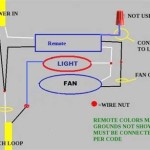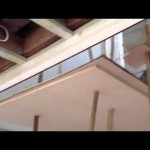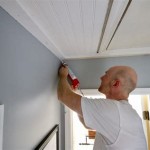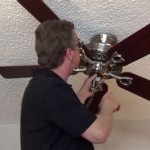How to Install AC Duct in Ceiling: A Comprehensive Guide for DIYers
Properly installed air conditioning (AC) ducts ensure efficient and effective cooling throughout your home. Whether you're upgrading an existing system or installing a new AC unit, installing ceiling ducts is an important step that requires careful planning and execution. Here's a comprehensive guide to help you navigate the process:
1. Planning and Preparation
Before starting, determine the size and layout of your duct system. Consider the number of rooms to be cooled, the square footage of each space, and the location of obstacles like beams or piping. Sketch a detailed plan of the duct layout, ensuring it meets building codes and allows for adequate airflow.
2. Gathering Materials
Gather the necessary materials, including insulated flexible ducts, duct tape, screws, anchors, and a stud finder. For safety, wear gloves and eye protection during installation.
3. Locating Joists
Use a stud finder to locate the joists in your ceiling. These load-bearing beams will provide support for the ductwork. Mark the joists along the planned duct paths.
4. Running the Ducts
Unroll the flexible ducts and feed them through the holes you made. Secure the ducts to the joists using screws and anchors. Make sure the ducts are taut but not so tight as to restrict airflow.
5. Connecting the Ducts
Use duct tape to connect the sections of ducts together. Overlap the edges by at least 6 inches and wrap the tape tightly around the joint. Ensure the connections are airtight to prevent air leaks.
6. Installing Registers and Vents
Cut holes in the ceiling at the desired locations for registers and vents. Install them and connect them to the ductwork using screws or nails.
7. Sealing the Ducts
Seal any gaps or openings around the ducts, registers, and vents using caulk or foam sealant. This prevents air leaks and improves the efficiency of your AC system.
8. Finishing Touches
Clean up any debris and trim excess duct material. Inspect the system for leaks or loose connections and make any necessary adjustments. Finally, turn on the AC unit and check if the airflow is sufficient and uniform throughout the rooms.
Tips for Success
* Use high-quality insulated ducts to minimize heat loss or gain. * Keep the duct runs as short and straight as possible to reduce resistance to airflow. * Avoid kinks or sharp bends in the ducts, as they can impede airflow. * Use duct hangers or straps to support the ducts securely and prevent sagging. * Consider using a professional HVAC technician if you're not confident installing the ducts yourself.
How To Replace Your Ac Vent Covers Clf Services

Hvac Ductwork Air Duct Types Working Problems Installation Austin Area Conditioning And Heating G S Mechanical

Incredible Exposed Duct Work Installation Finishing

Ducted Air Conditioning Installations Comprehensive Guide

How To Install Ductwork In A Basement Diy Finished Renovation

Flex Ducts Are Yours Installed Properly Kalos Services

Learn How To Install Return Air Duct In Your Home The Kings

How To Replace Your Air Conditioner Ceiling Vent For Better Efficiency

Replacing A Heat Vent Register

Ducts In Dropped Ceilings Building America Solution Center
Related Posts








